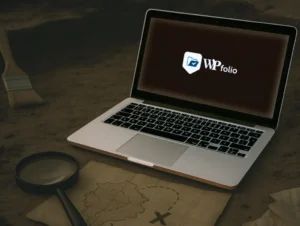The Coronavirus pandemic has closed a majority of economies, banned retail and in-person businesses, and brought the global economy to a halt in a manner unlike any experienced before by anyone alive today.
I’m pretty sure a lot of business owners learned a lot about how stable, solid, necessary, and vulnerable their businesses were in the first few weeks of March.
At the start of the closures in early March 2020, I’m managing two online businesses (and a few smaller projects) with a few thousand customers spread as far across the globe as possible.
Some customers are operating directly in the most affected spaces, like retail, travel, and entertainment. Other customers are working harder than ever as more and more of their business success is dependent on their continued – and increased – online productivity.
For a business-to-business company focused on a set of products and services, I’ve seen both sides of this issue play out in various ways in the first month of the shutdown.
Hopefully, I can capture just a few down on paper for posterity.
Initial Reaction
Like almost any business owner the world over, there was some initial disbelief that the solution to a global medical crisis was to shut down the economy of every country on the earth immediately.
The jury is still very far out regarding whether heeding this extreme reaction was advisable, but that is what we collectively did, so we have no choice but to move forward with the situation we have been given.
Once it was obvious that governments would close all non-essential businesses that had a face-to-face interaction component, thoughts of how to survive became paramount for everyone invested in the ongoing viability of their companies, businesses, and their own livelihoods.
I can only speak of my small visibility into the businesses that I manage, so I wanted to write about what I experienced during the months that this shutdown continues in more of a journalistic fashion.
So here goes nothing!
First Month for QuotaGuard (B2B and B2E Customers)
The month of March 2020 seemed to be the longest in human history. I thought it was just me until I saw multiple cartoons and memes pointing out how painfully long March felt to everyone.
Obviously, it was a busy few weeks trying to prepare for the unknown of what was about to happen.
Fortunately, as of March 31st, not a single QuotaGuard customer has written us using any variation of the phrase “because of the pandemic, we are doing X, Y, Z…” which is surprising. In fact, the month of March continued to be business as normal.
Overall Picture from QuotaGuard’s Point of View
In total, for March, I didn’t see cost-cutting at a level that would cause me concern at this early phase of the pandemic.
Sign-ups continued at a normal, to even a slightly accelerated pace. Since QuotaGuard is part of the overall move to a more cloud-based infrastructure focus, the business may be benefiting increasingly from the overall growing need for cloud services occurring from businesses moving to WFH across the globe. But that’s just a guess, considering no new customer has said they are starting with us due to current events either.
In fact, if I weren’t aware of what was going on outside, I’d have no idea – based on my interactions with the QuotaGuard customer base – that anything had changed in the economy.
One Customer Example of (Possibly) Cancelling Due to the Closure
There was only one prominent larger retail store chain that I saw go from a large plan to $0, yet they did not cancel their subscription.
Not canceling a subscription is usually a good sign because when customers cancel a subscription, they lose all their configuration, historical data, and integration within our infrastructure.
But, if a customer needs a short pause, they usually switch to a lower plan, but they don’t cancel.
Maybe they are moving their integration from staging to production, or maybe they intend to pick back up on a new project again soon. Therefore, I always look to see if a customer cancels or downgrades, to see if they are churning or just pausing for a bit of time until our service is needed again.
In this particular case, I saw that company closed their entire national chain of stores the day before they downgraded with us, so I’m hoping once those stores open back up, that account will go back to its normal level of usage, and we’ll be back in business with them.
Takeaway: IT Departments Are Essential Businesses
One lesson that I learned from this month is, “IT departments are ‘essential businesses,’ they need to keep operating, continue to pay their vendors, and operate as if the business is running and will continue to run in perpetuity, even if their customer-facing business is closed.”
In mid-March, I wrote on IndieHackers, “If a national lock-down occurs, will customers cut off “in progress” projects and cancel current subscriptions…possibly to pick them up again in the future? Or will most tech companies (by far our biggest customer segment) continue to work, deploy, and create new projects from remote locations?”
I guess now I know a bit more about the answer. I’m never going to feel 100% confident we’re going to sail through this with no issues, but I’m feeling better as of the end of March.
If you’re trying to think of a product or service to build, buy, or have designed for you, having an offering that is integrated into a company IT department might be a good idea, as IT never closes (even if the Internet is down for days, the IT department will still be working).
No matter what is happening globally, IT departments’ tools are likely to continue to be needed and/or increased during periodic changes to normal business operations, such as pandemics. It’s not a bad idea to be selling those tools as a long term business plan.
Takeaway: Not All Customers Quit For Financial Reasons
I spent one Saturday morning at the end of March compiling a list of customers who churned in the preceding four weeks, assuming that some of them did it for financial reasons. I emailed each of them saying that if they were having cash flow trouble, write back, and we’ll figure out a way to make it work for them during the pandemic time frame.
Not a single one wrote back, not one!
Those customers all left because they no longer needed the product. Not for financial reasons that would have been strong enough from my offer to help to save the project they were using QG for in the first place.
This really surprised me, I thought we’d get more of a response, but alas, that’s what I got! A bit of a head-scratcher, for now. I haven’t given up on some “win back” campaign, but so far, it looks like that’s not going to be a very successful endeavor.
First Month for Appointment Reminder (B2B / B2SMB)
(At the time the first half of this was written, there was no shutdown order in the USA yet, so I’m keeping it in there to show what my thoughts were at the time and how they changed through March 2020)
Appointment Reminder is the type of business usually in higher demand at this time of the year since it is tax return prep time. That demand causes an increase in CPA / Tax Prep company customers returning from years prior.
What I obviously didn’t expect was a pandemic at the same time.
With the extension of tax filing dates, I could see the CPA revenue stream continuing a few more months out than usual, which is obviously good for business. Yet, some CPAs also wrote in saying, “they’d be back in a few months,” implying they were going to take some time off until taxes are due again in July.
But that small bump will likely be dwarfed by the pandemic and the public/government reaction to it in the short term for Appointment Reminder.
AR is predominately a business that customers still need to keep setup and running during a short term loss in business velocity. At the beginning of March, I didn’t see a wave of cancellations, nor have I seen a diminishing number of signups vs. a typical March. Yet, many of our customers are SMB’s and a prolonged (by which I mean 4 weeks plus) shutdown of their business will likely cause bankruptcies for some of them.
It is important to point out that AR only runs for businesses in the USA and Canada, so any economic changes in those two countries will have a heavy impact on AR.
By the end of March 2020, we saw about a 10%+ pullback in customer billings almost exclusively coming from customers who had to cancel due to their businesses’ shuttering.
Almost all of them said they would be back as soon as this was all over, but that’s only if they are all still in business.
Many of AR’s customers are small businesses, nail salons, barbershops, yoga studios, exercise class locations, etc. Obviously, these are the types of businesses that everyone worries will fail before the economy can get back to a respectable level of traction, as they likely have a high fixed cost and little flexibility to survive a sudden cessation of income.
I imagine April will see the same contraction level – if not an accelerated amount of closed or postponed accounts. Obviously, that hits our viability as a going concern as well, as fixed costs are tough to get out of quickly.
Takeaway: Software Margins Save Your A** in These Situations
We all know that software has a higher margin and much more of a variable cost structure (I’m generalizing a lot there. Bear with me, as I realize some online businesses aren’t this fortunate), and with less usage, our costs will go down a bit. I’d guess maybe 2-3% reduction in costs for every 10% in lost revenue.
Compare this with the total loss of business for an Amazon store selling travel-related products, or an e-commerce business with no recurring revenue structure as part of the income plan, or an FBA store that either has a warehouse full of product they can’t sell or lost its Chinese production pipeline for a few weeks. Each month, those types of businesses must find new customers, convince prior customers to buy again, and struggle to keep their supply matching demand.
When you’re working with software products and services – especially those with a recurring revenue model and high margins – your business product is likely integrated into the way your customer makes money from their customers. Because of this, you may find that software businesses are a more stable bet than most other online businesses when times get rough in contraction periods, recessions, depressions, and even pandemics.
The higher margins help your business weather the storms because even if many customers need to cancel, your margins can keep you in the black through a prolonged storm… and even the occasional global hurricane.
Like many small businesses, if AR can survive to the point where the economy is allowed to function again, and most of the customers come back, it will survive through the pandemic. If a loss of 40-50% of customers is permanent, then AR would still be profitable from its margins, fun to operate, and continue to help SMB’s recover in the future as the business environment gets back to normal.
End of March Thoughts
This will continue to be a tough time for non-governmental employees, gig contractors, and small business owners in particular. I am afraid that governmental steps to curb real and perceived threats to public health and safety will come at the expense of those three groups almost exclusively when the dust settles (hopefully) in a few weeks.
The best we can do is move forward, accept the things that we can not change, and double down on the things in our lives that we have control over and manipulate for the better.
The ongoing viability of my type of software products and services, especially ones with a strong recurring revenue / SaaS component in the revenue model, further highlights why so many businesses are moving rapidly to a subscription-based economy.
Just imagine if my local car wash had created a monthly subscription-based service before this pandemic (I kept telling them to do it)? They would likely still have many customers paying for the subscription, even though they can’t get car washes right now.
I’m still paying for my gym membership, not because I can go to the gym, but because I know it will help out the small gym owners get through this difficult time and open soon. I’d be paying my car wash too, but they never opted to consider a subscription-based business model.
Looking ahead…April 2020 will have a full 30 days of lockdown, and those results will prove to be very interesting, I’m sure.




